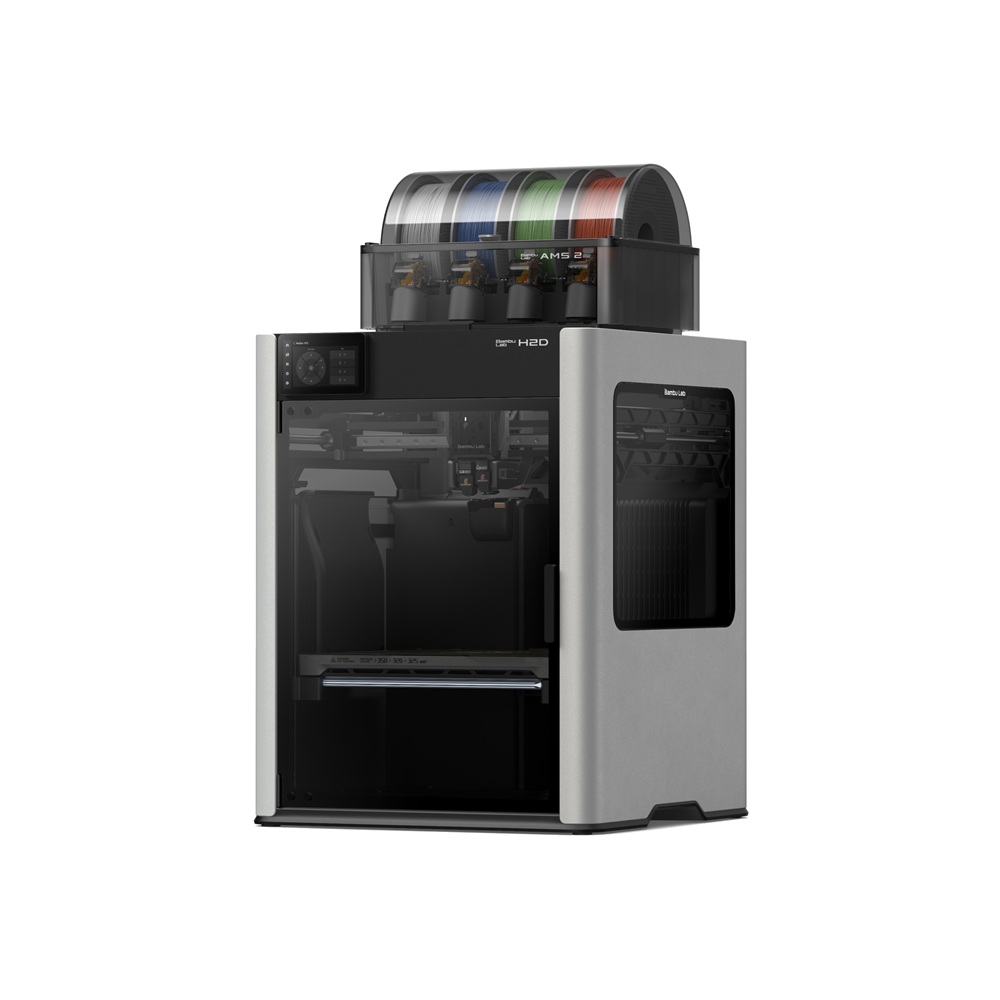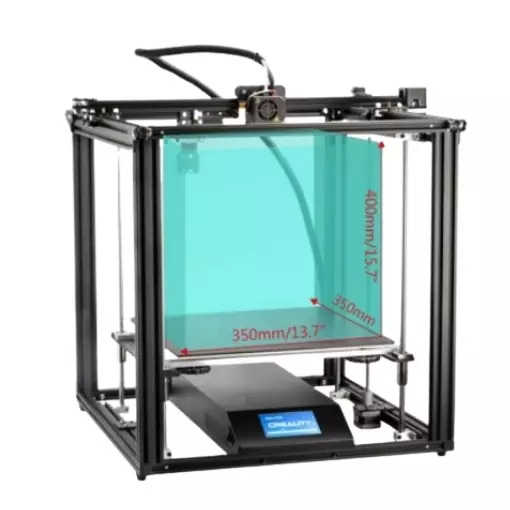Compare H2D vs Ender 5 Plus
Comparison between the best 3D printers
Choose the best 3D printer at the best price. The cheapest 3D printers are here.
Buy a 3D printer here with 3D Fila.
 |
 |
|
| Model | H2D |
Ender 5 Plus[BUY Ender 5 Plus] |
| Printing Material | Filament | Filament |
| Buy Filament for Bambu Lab H2D | Buy Filament forCreality 3D Ender 5 Plus | |
| Estimated price | $1899,00 | $599,00 |
| Manufacturer | Bambu Lab | Creality 3D |
| Release Year | 2025 | 2019 |
| Print Volume [mm] | 350x320x325 | 350x350x400 |
| Printer Size [mm] | 492x514x626 | 632x619x666 |
| Weight [kg] | 42,3 | 18,2 |
| Power Loss Recovery | YES | YES |
| Enclosed printer | YES | NO |
| Bed Leveling | Automatic | Automatic |
| Filament End Sensor | YES | YES |
| Bed type | Heated | Heated |
| Power supply system | Direct Drive | Bowden |
| Standard nozzle | 0,4 | 0,4 |
| Maximum Nozzle Temperature [°C] | 350 | 260 |
| Maximum Bed Temperature [°C] | 120 | 100 |
| Maximum printing speed [mm/s] | 600 | 180 |
| Filament holder | YES | YES |
| Camera for supervision | YES | YES |
| Recommended filaments | PLA, PETG, ABS, ASA, TPU, PVA, Nylon (PA) | PLA, TPU, ABS, PETG |
| Recommended slicers | Bambu Studio | Cura, Simplify, Slic3r |
| Maximum Resolution [mm] | 0,01 | 0,1 |
| Processor | 32 bits | |
| Display | Touchscreen 5'' | Touchscreen TFT 4,3'' |
| Power Supply | 24V / 504W | |
| Connectivity | Wifi, Bambu bus, Cartão SD | SD / USB |
| Operating systems | Windows, Mac, Linux | Windows, Mac, Linux |
| Date of registration in the system | 2025-03-31 | 2021-04-14 |
| Release date | 2025 | 2019 |
| Extra features | Bambu Labs H2D combines high-speed 3D printing with a chamber heated up to 65 °C, dual extrusion with automatic nozzle switching, an AMS for filament drying and exchange, and AI sensors that detect failures. It offers optional laser and digital cutting capabilities, features intelligent calibration through computer vision, vibration control, enhanced fire safety, and real-time camera monitoring. | The Ender 5 Plus offers a large print volume (350x350x400 mm) and fast assembly. It includes a BLTouch sensor, but with range limitations. It stands out for its dimensional accuracy, although it requires adjustments to the slicer settings. Despite the noise, its integrated design saves space, and includes features such as a filament sensor and power resumption. Ideal for large projects, it requires refinement in the settings for high-quality prints. |
| Support for multiple colors and materials (AMS and CFS) | YES | NO |
Notes * |
||
| Cost-benefit | 7 / 10 | 6 / 10 |
| Hardware | 8 / 10 | 2 / 10 |
| Tela | . | . |
| Print volume | 4 / 10 | 4 / 10 |
| Performance | 5 / 10 | 1 / 10 |
| [BUY Ender 5 Plus] |
Conclusion |
| In conclusion, when comparing the Bambu Lab H2D and the Creality 3D Ender 5 Plus, several key factors emerge that can help guide your decision based on your specific needs and budget. The H2D stands out with its advanced features, including high-speed printing capabilities, a fully enclosed design, and superior material compatibility. Its large print volume and cutting-edge technology such as automatic nozzle switching and AI sensors make it ideal for professional and ambitious projects. However, this comes at a premium price, reflecting its advanced engineering and recent release. On the other hand, the Ender 5 Plus is a more budget-friendly option with a decent print volume and solid performance, especially for beginners and hobbyists. While it lacks some of the advanced capabilities of the H2D, it still offers reliable printing, ease of assembly, and sufficient features for casual use. Its lower price makes it accessible for those who are new to 3D printing or who require just basic functionality. Ultimately, the choice between these two printers should be influenced by your budget and project requirements. If you prioritize cutting-edge technology and high-speed printing, the H2D may be worth the investment. Conversely, if you seek an affordable and reliable printer for general use, the Ender 5 Plus is likely the better fit. |

